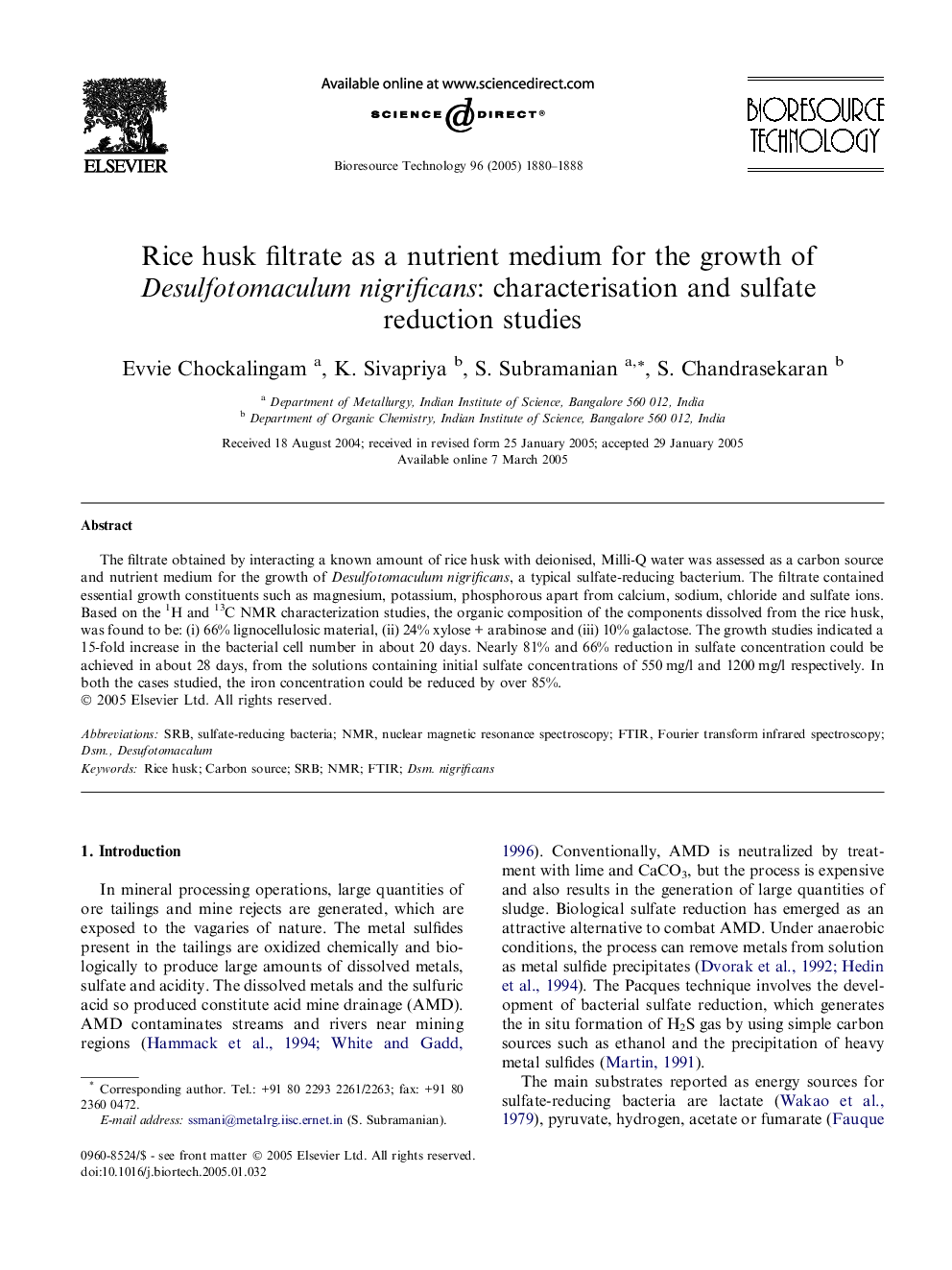| Article ID | Journal | Published Year | Pages | File Type |
|---|---|---|---|---|
| 10395966 | Bioresource Technology | 2005 | 9 Pages |
Abstract
The filtrate obtained by interacting a known amount of rice husk with deionised, Milli-Q water was assessed as a carbon source and nutrient medium for the growth of Desulfotomaculum nigrificans, a typical sulfate-reducing bacterium. The filtrate contained essential growth constituents such as magnesium, potassium, phosphorous apart from calcium, sodium, chloride and sulfate ions. Based on the 1H and 13C NMR characterization studies, the organic composition of the components dissolved from the rice husk, was found to be: (i) 66% lignocellulosic material, (ii) 24% xylose + arabinose and (iii) 10% galactose. The growth studies indicated a 15-fold increase in the bacterial cell number in about 20 days. Nearly 81% and 66% reduction in sulfate concentration could be achieved in about 28 days, from the solutions containing initial sulfate concentrations of 550 mg/l and 1200 mg/l respectively. In both the cases studied, the iron concentration could be reduced by over 85%.
Keywords
Related Topics
Physical Sciences and Engineering
Chemical Engineering
Process Chemistry and Technology
Authors
Evvie Chockalingam, K. Sivapriya, S. Subramanian, S. Chandrasekaran,
